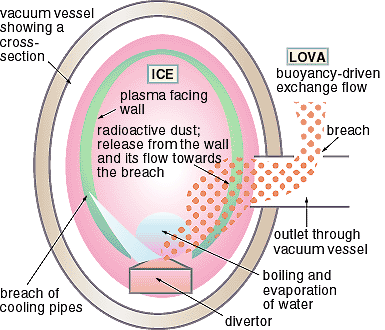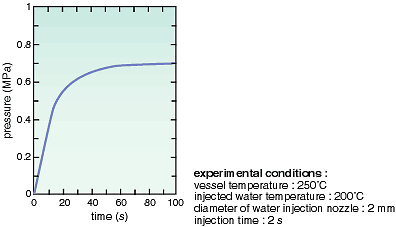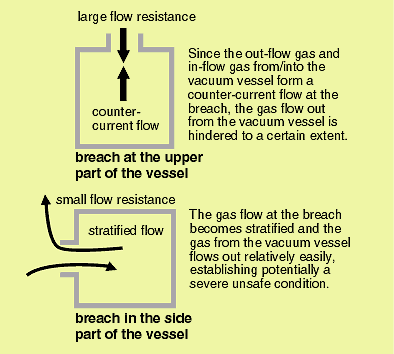As a part of the ITER engineering design activities we have carried
out experimental studies of various aspects of the engineering safety
of a vacuum vessel which is a major component of a fusion reactor.
Inside the vacuum vessel there will be various structures such as the
first wall and the divertor exposed directly to the high temperature
plasma, and many complicated pipings for their heat removal. If a local
heat concentration exceeding the design value occurs in a short time
on these structures due to plasma instabilities, for example, it may
lead to a break of cooling pipes and a jet of cooling water into the
vacuum vessel, technically called as ingress of coolant event (ICE).
This may further lead to a break of the vacuum vessel by a rapid increase
in pressure due to the evaporation of high-temperature and high-pressure
water emerging from the breakage in the cooling pipes (loss of vacuum
event, LOVA). As a result, a serious leak of the fuel tritium gas and
gaseous radioactive micro-dust from the vacuum vessel as exchange flows
should be postulated.
We have started a preliminary study of ICE and LOVA by a simulation
experiment; boiling evaporation phenomena, pressure rise processes,
and thermal-hydraulic charac-teristics of exchange flows through breaches
in a vacuum vessel are quantitatively investigated. Parts of the experimental
data obtained from this study are immediately used as validation data
for the safety analysis codes used in the ITER design activities. Figure
5-8 is the result of an ICE experiment showing the time evolution of
the pressure rise in a vacuum vessel. We have also found different behaviors
of exchange flows arising at the breach depending on the part of the
vacuum vessel where the breach occurs as shown in Fig. 5-9. This finding
also contributed to the ITER design; they have changed a postulated
breach region in the vacuum vessel from an upper part to a side part
of the vessel to secure safety against a possible severe accident of
the vacuum vessel. |


